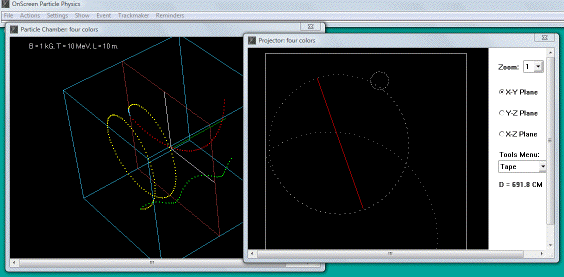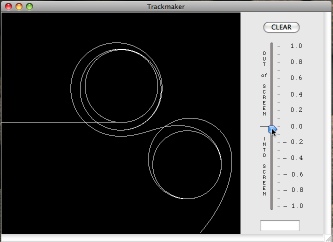Mac OS 10.11 spindoctor-2018-03-23.dmg. Random top spin and back spin shots will be made. The parallel component acts at the contact point and changes the.
Physics based 2D sandbox (for things here on Earth). Commercial software for Windows and Mac OS X. Physics based 3D sandbox (for human sized objects). It's a game Windows and Mac. A simple gravity simulator that's more aesthetic than representative of reality. Runs under Linux, Windows and Mac OS X. Apple quickly issued an update to iOS 7 and iOS 6, but took longer to issued an update for Mac OS X, despite Apple confirming that the same SSL/TSL security flaw was also present in OS X.
Physics...Some years ago I created many SuperCard Player projects with text, graphics, and animations for teaching a one-year calculus-based general physics course at Saint Louis University. The projects were designed to accompany lectures, so they are not complete tutorials. Still they should be useful to students. They are very easy to use. Each click of the mouse button causes a new text entry or graphic to appear. So you can set your own pace. You do not need to own SuperCard. These are freeware projects which only run on a Mac under OS X. They have been updated using SuperCard 4.7. The included SuperCard Player Installer now installs SuperCard 4.7 Player, which is a Universal application. So Physics now can be played on either PowerPC or Intel equipped Macs. What is included in the download? 1. 'Read me! Physics' and 'Read me! SolveLinEqs'. 2. 'SuperCard Player Install.dmg'. Run this to install the 'SuperCard Player 4.7' folder. 3. 'PICS folder'. Put this in the 'SuperCard Player 4.7' folder. 4. Semester I folder. There are 34 SuperCard projects covering the first semester. The number before each name is its order in a course using Halliday and Resnick. Just double click a project to run it. The first card explains what to do. 5. Semester II folder. There are 33 SuperCard projects covering the second semester. 6. Semester I list. A list of the project names for Semester I. 7. Semester II list. A list of the project names for Semester II. 8. 'SolveLinEqs' application.
Associate Professor
Physics Education
Biomedical-Physical Sciences Bldg.
567 Wilson Rd., Room 1310A
(517) 884-5657

caball14@msu.edu
http://www.pa.msu.edu/people/caballero/

Education:
2011: Ph.D. Physics, Georgia Institute of Technology
2007: M.S. Physics, Georgia Institute of Technology
2004: B.S. Physics, University of Texas at Austin
2011: Ph.D. Physics, Georgia Institute of Technology
2007: M.S. Physics, Georgia Institute of Technology
2004: B.S. Physics, University of Texas at Austin
Selected Publications
The Colorado Upper-Division Electrostatics (CUE) diagnostic: A conceptual assessment for the junior level, S.V. Chasteen, R.E. Pepper, M.D. Caballero, S.J. Pollock, and K.K. Perkins, Phys. Rev. ST Phys. Educ. Res. 8, 020108, 2012, Open access: http://prst-per.aps.org/abstract/PRSTPER/v8/i2/e020108
Implementing and assessing computational modeling in introductory mechanics, M.D. Caballero, M.A. Kohlmyer, and M.F. Schatz, Phys. Rev. ST Phys. Educ. Res. 8, 020106, 2012, Open access: http://prst-per.aps.org/abstract/PRSTPER/v8/i2/e020106
Comparing large lecture mechanics curricula using the Force Concept Inventory: A five thousand student study, M.D. Caballero, M.A. Kohlmyer, M.F. Schatz, et al., Am. J. Phys., 80, 7, 2012, Open access: http://arxiv.org/abs/1106.1055
A Tale of Two Curricula: Performance of two thousand students in introductory electromagnetism, M.A. Kohlmyer, M.D. Caballero, M.F. Schatz, et al., Phys. Rev. ST Phys. Educ. Res. 5, 020105, 2009, Open access: http://prst-per.aps.org/abstract/PRSTPER/v5/i2/e020105
Placing the Deep Impact Mission into Context: Two Decades of Observations of 9P/Tempel 1 from McDonald Observatory, A.L. Cochran, E.S. Barker, M.D. Caballero, and J. Gyorgey-Ries, Icarus 199 (119), 2009, Open access: http://arxiv.org/abs/0809.0479
Random Acts Of Physics Mac Os Download
Professional Activities & Interests / Biographical Information
Danny Caballero is a physics education researcher who studies how tools affect student learning in physics, and the conditions and environments that support or inhibit this learning.
Danny earned his B.S. in physics from the University of Texas at Austin in 2004. He worked on opto-microfluidics transport and control experiments at the Georgia Institute of Technology where he earned his M.S. in physics before shifting his research focus to physics education. Danny helped found the Georgia Tech Physics Education Research group in 2007 and earned the first PER-focused Ph.D. from Georgia Tech in 2011 working on computational modeling instruction and practice. He moved to the University of Colorado Boulder as a postdoctoral researcher where he helped transform upper-division physics courses to more active learning environments.
Danny conducts research from the high school to the upper-division and is particularly interested in how students learn physics through their use of tools such as mathematics, computing, and language. His work employs cognitive and sociocultural theories of learning and aims to blend these perspectives to enhance physics instruction at all levels. Danny's projects range from the fine-grained (e.g., how students engage with particular mathematical tools) to the course-scale (e.g., how students learn the tools of classical mechanics) to the very broad (e.g., how do students in a massively open on-line course act like scientists?).
Random Acts Of Physics Mac Os 11
While co-directing the Physics Education Research Lab at MSU, he continues to collaborate with physics education groups at Georgia Tech and Colorado on a number of these and other projects.
⇒ ⇒ 500 Mac OS